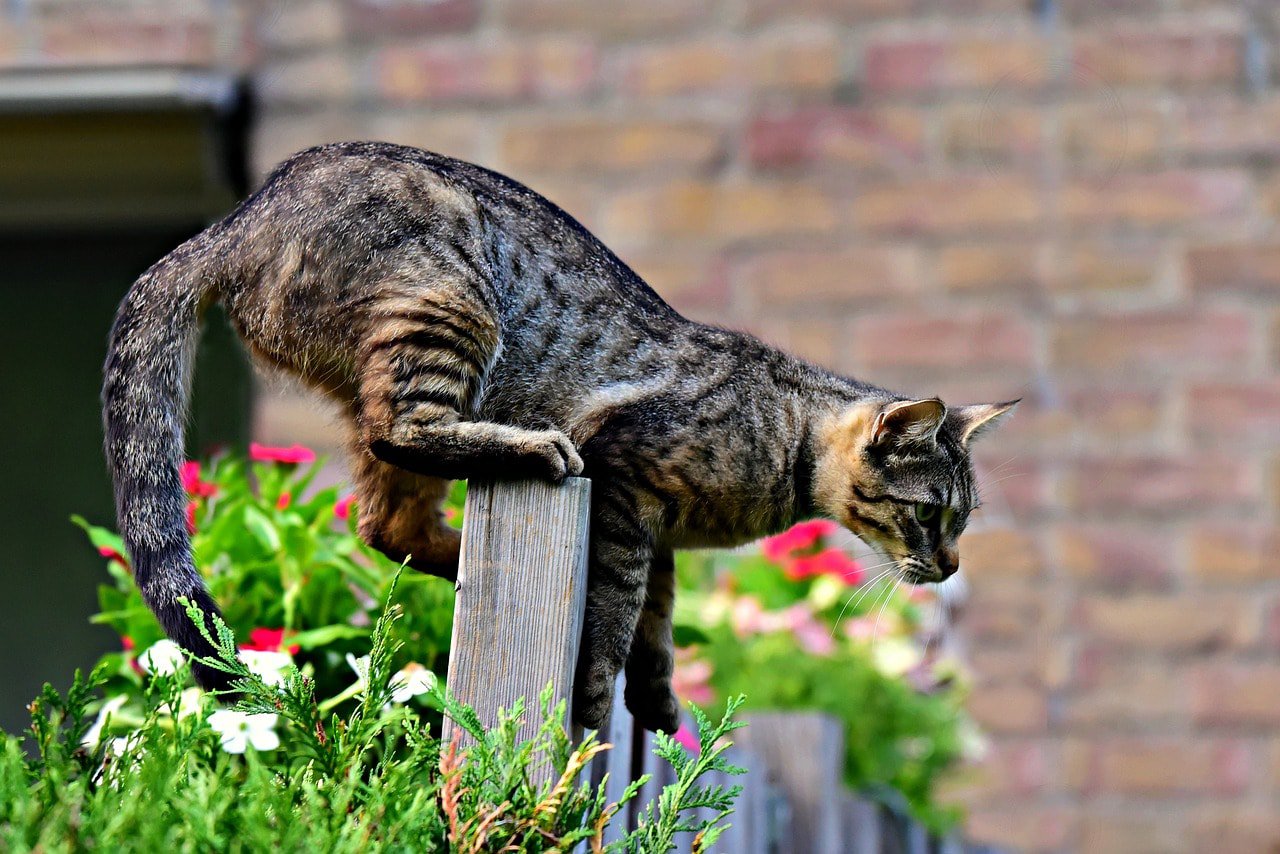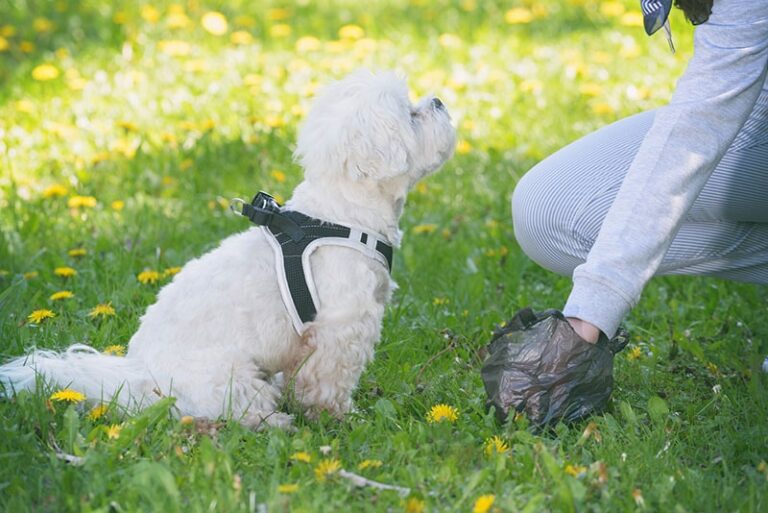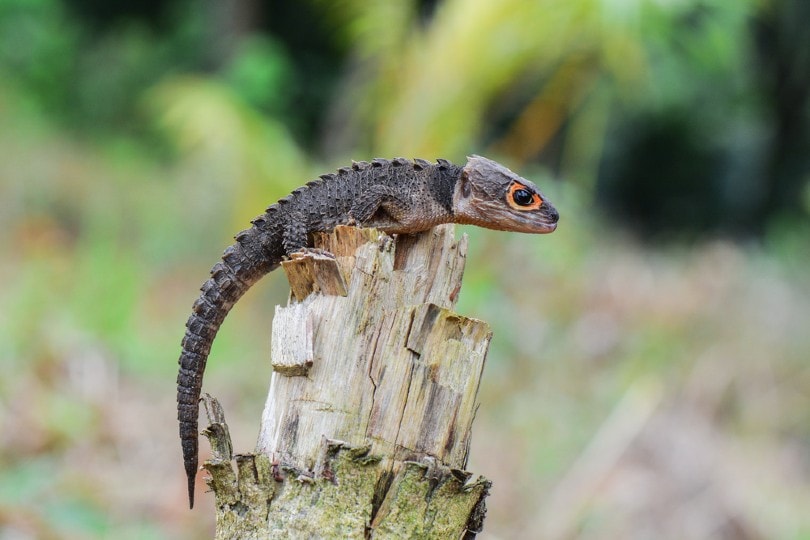VET APPROVED

The information is current and up-to-date in accordance with the latest veterinarian research.
Learn more »Click to Skip Ahead
If you love cats as we do, you’ve probably heard many stories about them. Some people consider a black cat crossing your path to be unlucky, while others find it a sign of great luck. Some will tell you cats have nine lives, or they will steal the breath of a baby. Another thing many people say about cats is that they always land on their feet. If this is something you’ve heard and would like to find out if it’s true, keep reading while we get to the bottom of this statement to see if it’s true, how they do it, and if it’s safe, to help you be better informed.
The short answer is yes, cats almost always land on their feet. Keep reading to learn more!

Do Cats Land on Their Feet?
Yes. You might be surprised to learn that this is one true myth. So, let’s look at how the cats land on their feet.
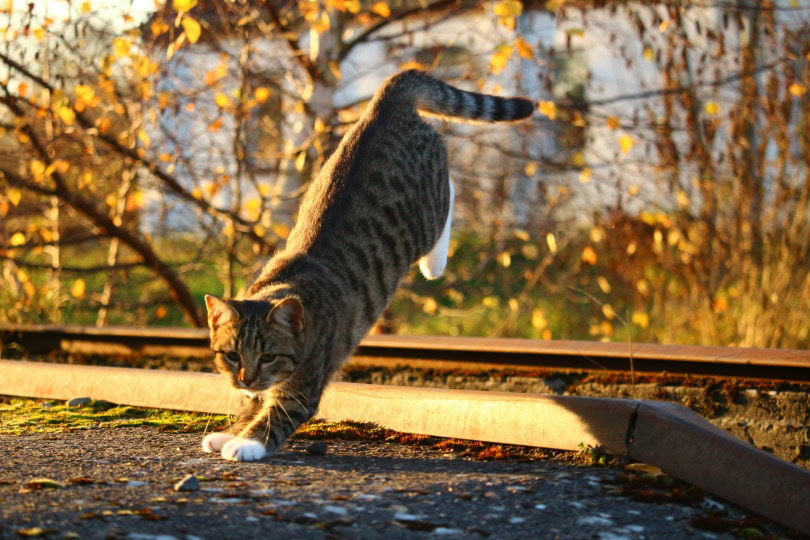
Righting Reflex
Cats have a righting reflex that causes them to instinctively right themselves in the air as they fall. Cats can show signs of this reflex when they are as young as 3 weeks, but it will take about 7 weeks to develop it completely.
A French scientist named Etienne Jules Marey studied the circulation of blood, experimental physiology, terrestrial and aerial locomotion, and more. He also studied why cats landed on their feet and came up with the righting reflex.
He used a special camera to take several images of a cat as it fell to demonstrate how cats use this ability to land on their feet. Before this study, many people believed the cat pushed themselves off the object they were falling from to get the force needed to turn their body and land on their feet.
Marey’s research proved that the cat doesn’t need to push themselves. They can manipulate physics by bending their body in half to keep the angular momentum at zero, allowing them to rotate their upper and lower body on a separate axis to remain in control during the fall instead of spiraling out of control in freefall like a human would.
Is Landing on Their Feet Safe?
Yes. As long as the cat isn’t very high off the ground, the cat will be fine landing on their feet, and doing so will help prevent damage to other parts of the body, mainly the ribs, head, spine, and internal organs. However, if the cat falls too far, they can still receive serious injuries even if they land on their feet.
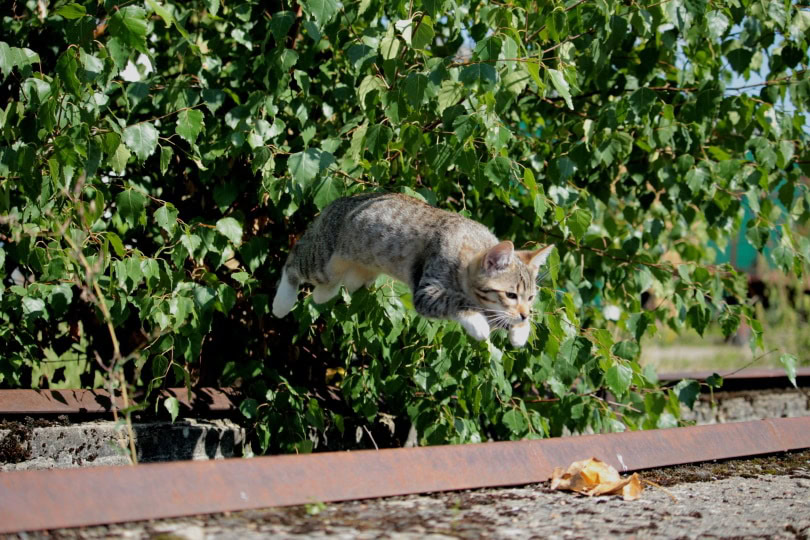
Cat Injuries from Falling
Unfortunately, the majority of cats that suffer injuries from falling are under 3 years old, so it’s important to pay special attention to your cats during this time, especially if there are dangerously high areas in your home, such as balconies or open windows. Male cats that haven’t been neutered are more likely to get into these mishaps because they try to get a female’s attention during the breeding season and have a tendency to roam.
Will All Cats Land on Their Feet?
Yes. Almost all cats have the righting reflex that will allow them to land on their feet. As we mentioned earlier, a kitten will take several weeks to fully develop the skill, so they may not land on their feet before they’re around five to seven weeks old. Senior cats might also have difficulty landing on their feet due to weakened muscles and bones, and they are also more prone to injury. Even falls that don’t cause injury can be painful if the senior cat is suffering from arthritis or joint problems. Overweight cats might not be able to get their body into a V shape, which the righting reflex requires, and they are also more prone to injury.

How Far Can a Cat Fall?
The distance a cat can safely fall will depend on several factors, including their age, weight, and the surface they’re falling onto. Some adult cats may be able to safely jump about eight feet without suffering any damage, which is pretty high by human standards and is roughly the height of most ceilings. Falling from a second-story balcony is where the cat begins to risk serious injury. If they fall onto cement or rocks, they can very likely get injured, but in some cases, it might not be a problem if the ground is soft and grassy.
Anything above a second-story balcony, and your cat is in extreme danger of suffering serious injury. However, you may be surprised by their resiliency. A study of 132 cats that fell from an average of 5.5 stories showed that 90% survived the fall, and while most of them had blunt force trauma to the chest, which can be life threatening, only 37% required emergency life sustaining treatment for shock, pneumothorax and lung contusions causing difficulties breathing, while 30% required nonemergency treatment, and the rest just monitoring.
How Can I Protect My Cat from Getting Injured During A Fall?
Unfortunately, there is little you can do for cats that spend a lot of time outside, except at least keeping them in at night, but if you have an indoor cat, you can do quite a few things to keep them safer.
- Make sure any perches or cat trees have cushions at the bottom that your cat can jump on.
- Ensure there is plenty of room around the perches and cat trees and no clutter that might make it difficult to make a clean jump.
- A window safety guard can help reduce the risk that your cat might fall out, trying to chase a butterfly or a bird.
- If you have a second-floor or taller balcony that you like to spend time on, you might be able to enclose it with a netting that will prevent falling without blocking your view.
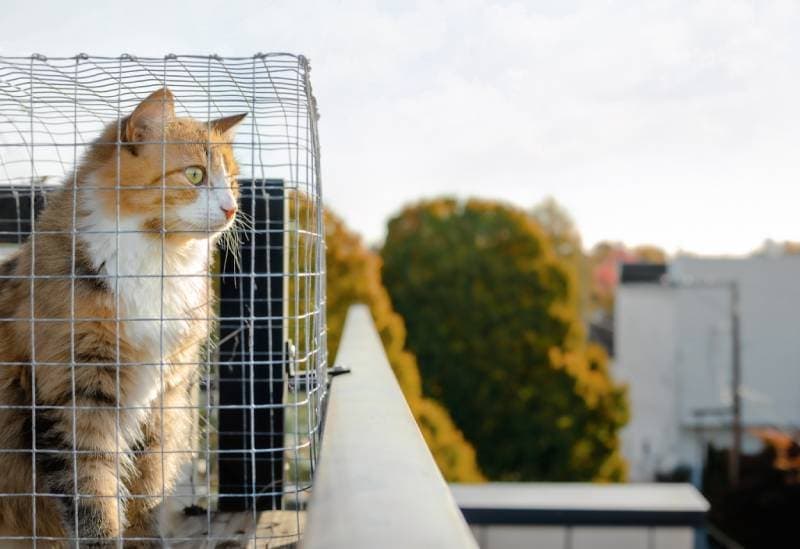

In Summary
It may surprise you to learn that cats are quite capable of landing on their feet from a fall. They do it using a special reflex they know before they are only a few weeks old. The reflex allows them to fold their body into a V and work the upper and lower parts of the body individually to get their feet on the ground. However, it’s important to remember just because they land on their feet doesn’t mean they won’t get hurt. Though studies show cats have an amazing survival rate, we recommend taking every possible step to avoid accidental falls, as they often result in life-threatening injuries.
We hope you have enjoyed reading over this short guide and found the answers to your questions. If we helped you understand your pet better, please share our look into if cats always land on their feet on Facebook and Twitter.
- A survey of bone fractures in the dog and cat – PHILLIPS – 1979 – Journal of Small Animal Practice – Wiley Online Library
- High-rise syndrome in cats – PubMed
- Hindlimb Muscular Activity, Kinetics and Kinematics of Cats Jumping to Their Maximum Achievable Heights
- Étienne-Jules Marey | Photographer, Chronophotographer, Physiologist | Britannica
- Photographs of a Falling Cat (1894)
- Development and maturation of postural reflexes in normal kittens – PubMed
Featured Image Credit: MabelAmber, Pixabay
